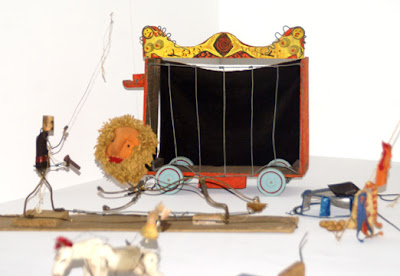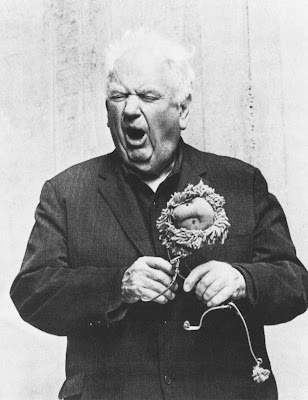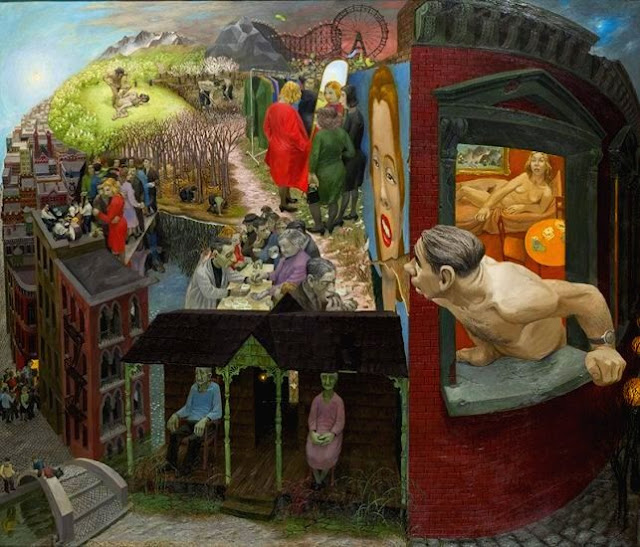Feb 28, 2012 | installation, sculpture, The Whitney Museum
 |
|
Lion and Cage from Calder’s Circus, 1926-31, from thecityreview.com |
Wire and fancy. That’s how I would describe this piece, or pieces rather. Three huge sets of miniature circus performers made of made of metal, wire, fabric, and yarn. A metal plated kangaroo the size of my hand rolls on ribbed washers. A clown wearing multi-colored layers topped by a lion coat has an almost ironically painted smile of red on his small wooden face. A lion with a plush face, yarn mane, and wire body is being tamed outside his cage by his wire-bodied master. And there’s tight-rope walkers, cowboys, acrobats, sword swallowers, everything expected of a circus setting, even the ringnmaster. I think I like it so much because there’s something about the idea of the circus that lends itself to being portrayed through this fanciful, although unglamorous, medium of wire.
 |
| Calder’s Circus, 1926-31, from the Whitney Museum of Art’s website. |
 |
| Alexander Calder, Roaring with his Circus Lion, 1971, from kaufmann-mercantile.com . |
Jan 15, 2012 | painting, The Whitney Museum
 |
| Oil on composition board. Whitney Museum. |
The whole image is comprised of varying scenes on one landscape, one globe, that connect in surreal, imagined ways. The street of a celebration scene leads by a warped metaphorical bridge to the front porch of an old couple colored green– they may already be dead. Over their roof leans a frumpy, middle-aged man who’s just left his very normal woman in bed to look out his window over his surely disappointing, surreally laid-out life. An unhappy dinner party takes place by a lake in the center, but the lake itself looks more like a glimpse into the underworld than a reflection of nearby trees. A nude man murders his brother in a field on the top left of this world, (very reminiscent of Cain and Abel) mirrored by topless farmers on the right. Metaphorical roller coasters can be seen in the distance, and a grotesque grayed woman examines herself in a more literal mirror while her even grosser friends look on. Really the only aesthetically pleasing aspect of this painting is the woman in the advertisement on the side of the middle-aged man’s building, but even she has a crack running through her face.








